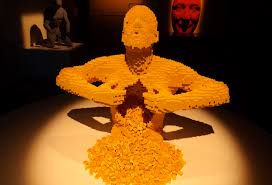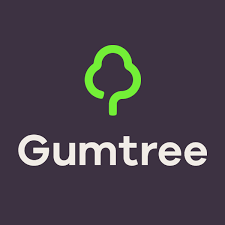buy lego road train

Yard sales and thrift stores can be very hit-and-miss. When you find them you can get great bargains, but most of the time it’s not fruitful unless you have other reasons to shop there. When I built my Pokemon sculptures, I was able to do that using a bulk brick tub that lego was selling at the time (set #3033). I bought about 20 of those at $20 each and still ran out of certain parts – that’s why Squirtle’s tail was so small. Sadly, that tub was discontinued a few years ago and the bulk tubs that are available more recently haven’t had nearly as good of an assortment or as good of a price per brick. Probably the easiest way to get cheap parts is to shop on BrickLink. It’s an online shopping mall just for LEGO. Sellers buy sets in bulk (generally when they have clearance sales at retail stores) and sort the parts, putting the individual pieces on their stores. Then you can go in and order any part in quantity. It’s an awkward site to use, but I think the best way is to start at the Catalog tab, find the part you want in the color you want, and then find a store that has them in sufficient quantity.

(Disclaimer: I have my own BrickLink store.) There’s also bulk brick available from LEGO; usually they’re a lot more expensive that way but once in a while you can find some real bargains. Look for the “Pick-A-Brick” in the LEGO Shop-At-Home Store and if you have a LEGO store in your nearby mall, they have an in-person pick-a-brick wall where you can fill up a plastic cup with LEGO parts for a set price. And of course don’t forget about buying sets on sale. Check for sales at LEGO Shop-At-Home (and try their phone number too, as they have weekly phone-only sales as well). If you know any other good ways to find bulk LEGO at economical prices, please post it here as a comment…. Shop for LEGO on AmazonSee all upcoming showings Get all times & ticketsBy using this site you agree to the use of cookies.Want more hacks for kids? Try out one of these awesome 25 sensory hacks for kids. Travel to a galaxy far far away with LEGO Star Wars, hang out with Emma and the girls with LEGO Friends, or see where your imagination takes you with LEGO Classic.

Whatever your preference, there's a LEGO set for you! LEGO, the LEGO logo, the Minifigure, DUPLO, NEXO KNIGHTS, BIONICLE and NINJAGO are trademarks of the LEGO Group. ©2016 The LEGO Group. Use of this site signifies your agreement to the terms of use. © & ™ Lucasfilm Ltd. ™ & © Warner Bros. Entertainment Inc. (s16) ™ & © 2016 Marvel & Subs.
buy lego 4433 ©2016 Mojang AB and Mojang Synergies AB. MINECRAFT is a trademark or registered trademark of Mojang Synergies AB.
buy lego 8458 Jurassic World is a trademark and copyright of Universal Studios and Amblin Entertainment, Inc.
lego 6970 buy Licensed by Universal Studios Licensing LLC.
buy lego houses of parliament
SCOOBY-DOO and all related characters and elements are trademarks of © Hanna-Barbera WB SHIELD: TM & © WBEI (s16)The very first train set, 323 Train, was released in 1965, without any track. It had ordinary road wheels. It was released only during that year, because in 1966 the LEGO Group introduced the first sets with track and battery powered motors.
buy lego airport 3182 LEGO 4.5V Trains were first introduced in 1966.
buy lego 10019They had blue rails and white sleepers (standard 8 x 2 plates), and the locomotives used the standard 4-wheel drive LEGO 4.5V motor unit. The wheels were flanged train wheels with rubber rims for traction, that were pushed into the motors. The batteries were carried behind the engine in a tender, or in a battery box built into the engine in the earlier sets. Since 1969, there was also a 12V train program, which used additional conductor rails mounted between the standard 4.5V rails, and 12V motors contained in the same housings as the 4.5V motors, but with additional metal contacts attached to the bottom of the housings.

This first period of the 4.5V and 12V trains, sometimes called the Blue Era because of the rails colour, lasted from 1966 till 1979. The second era (1980 - 1990), also called Grey Era, is characterized by dark Grey ties (sleepers) and light grey rails. Wheels were red or black. Both 4.5V (battery powered) and 12V (DC powered using add-on centre conductor rails) sets were available during this era, too. By real model train fans, this time is considered as the greatest era of LEGO Trains because of the rich availability of many automated accessories like Remote Controlled Switch Tracks (7858, 7859), Remote Controlled Signals (7860), Remote Controlled Road Crossing (7866) or Remote Controlled Decoupling (7862) - those remote controls could be combined with the Transformer / Speed Controller to a large extendible keyboard for controlling all functions from one central position. In addition to this the world around the trains could be illuminated by some electric lights (7867) - for a bright flair even beyond the rails.

The introduction of 9V-trains in 1991 marked the end of the earlier two voltages. This third era is characterized by integral moulded dark Grey rail/tie assemblies with metal conducting rails. Later the former outstanding standard Trains theme was integrated in the LEGO World City theme line. The 9V era was finished with a special experts model of the Factory line called Hobby Trains in 2006. In the same year LEGO Company introduced the new completely different RC system. These trains get their energy from batteries on board and are controlled via a Infrared remote control. For these trains, new non-electricity tracks (7896, 7895) were introduced. From now the Trains theme became part of the LEGO City theme line. In 2009 the special edition engine Emerald Night was released which had lovely designed details like new steam train type wheels. With the set came many new Train Accessories based on Power Functions including Power Functions Rechargeable Battery Box, Power Functions IR Receiver, Power Functions IR Speed Remote Control and Transformer 10VDC.